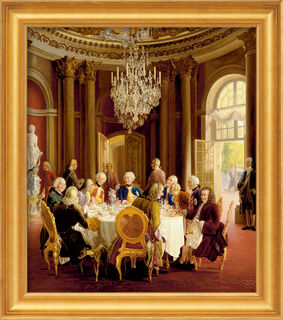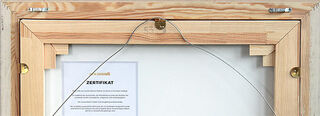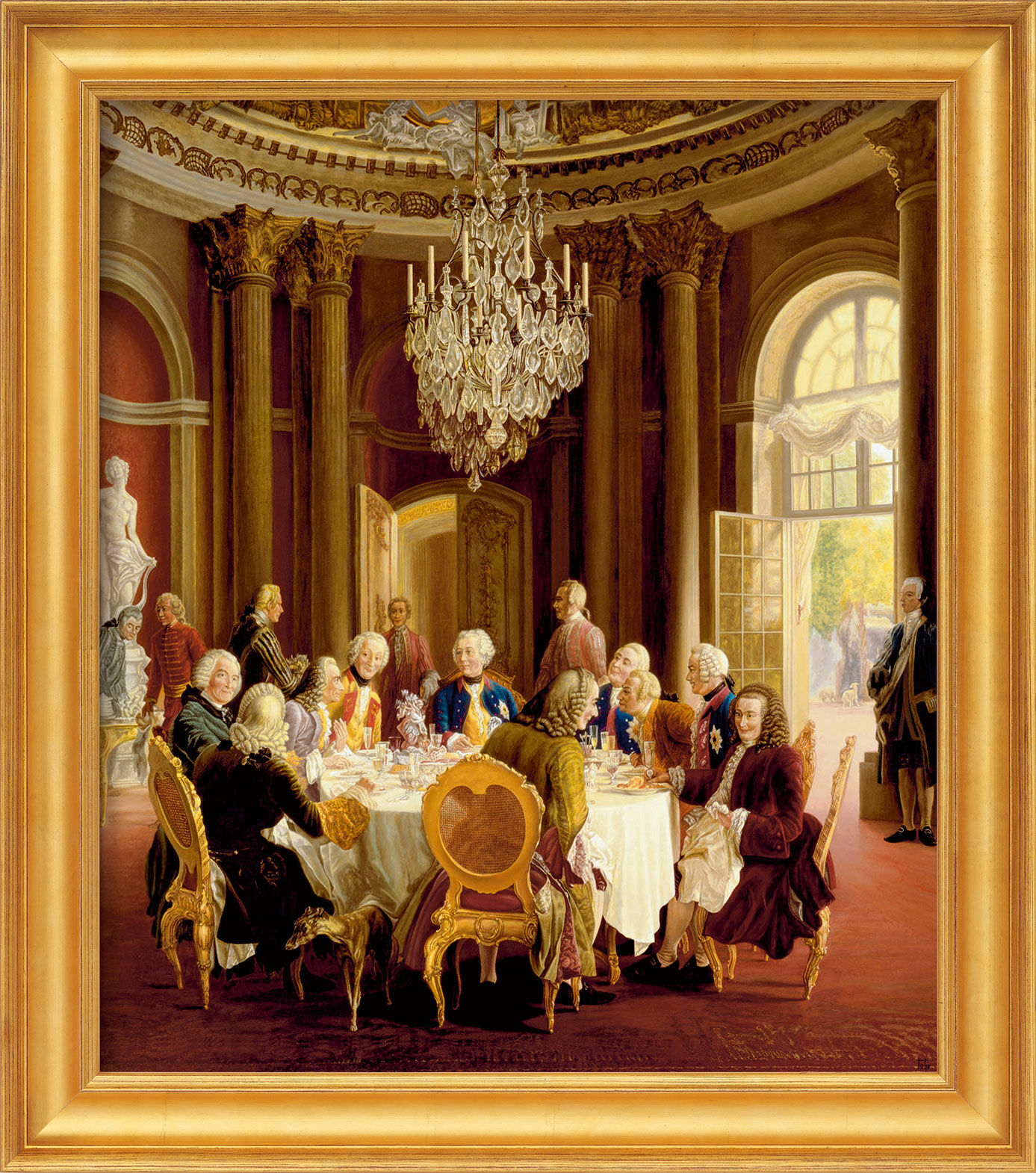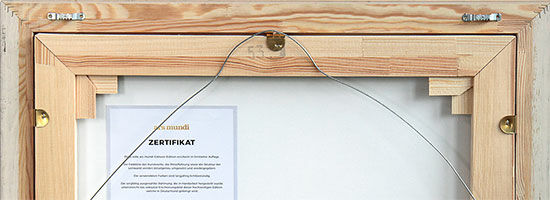Picture "The Round Table" (1850), framed


Picture "The Round Table" (1850), framed
Quick info
ars mundi Exclusive Edition | limited, 499 copies | reproduction, Giclée print on canvas | on stretcher frame | framed | size 61 x 54 cm (h/w)
Detailed description
Picture "The Round Table" (1850), framed
Frederick the Great, Voltaire, La Mettrie - Adolph von Menzel depicts a conversation of great minds in his famous group portrait of 1750, which was set on fire during the war. He presents the splendour of the marble hall at Sanssouci and the facial features of those at the table with the greatest realism. The painting was painted in 1850.
Original: Oil on canvas, formerly National Gallery Berlin, burnt during the war.
High-quality reproduction in the Fine Art Giclée process, worked by hand on artist's canvas of fine cotton and stretched like an original painting on an adjustable solid wood stretcher frame. The canvas structure is tangible and visible! Limited edition 499 copies. Framed in a handmade, golden solid wood frame. Size 61 x 54 cm (h/w). Exclusively at ars mundi.
Frame configurator
Customised picture frame

Frame configurator
Customised picture frame






Customer reviews
Frame variant: framed
Einfach wundervoll. Werde mir auch das Flötenkonzert irgendwann zulegen! Bis denne mal ganz Herzlichen Dank für die super Qualität, liebe Grüße aus Hamm am Rhein.
Frame variant: framed
Lieferung: schneller als erwartet !Verpackung: professionell !Qualität des Bildes: ausgezeichnet !Bin insgesamt sehr zufrieden und kann ars mundi weiterempfehlen !
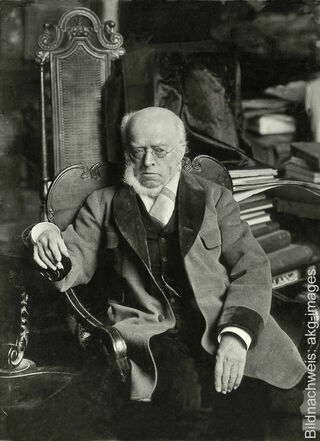
About Adolph von Menzel
1815-1905
Adolph von Menzel was awarded the Order "Pour le Mérite" for science and art, he was also an honorary citizen of the city of Berlin and was finally knighted in 1898. Menzel was not just a history painter. He was one of the great realists of his time and a chronicler of his epoch.
Graphic or sculpture edition that was initiated by ars mundi and is available only at ars mundi or at distribution partners licensed by ars mundi.
Depiction of typical scenes from daily life in painting, whereby a distinction can be made between peasant, bourgeois and courtly genres.
The genre reached its peak and immense popularity in Dutch paintings of the 17th century. In the 18th century, especially in France, the courtly-galant painting became prominent while in Germany the bourgeois character was emphasised.
Giclée = derived from the French verb gicler "to squirt, spurt".
The giclée method is a digital printing process. It is a high-resolution, large-format printout on an inkjet printer with special different-coloured dye- or pigment-based inks (usually six to twelve). The colours are fade-proof, i.e. resistant to harmful UV light. They have a high richness of nuance, contrast and saturation.
The giclée process is suitable for art canvases, handmade and watercolour paper as well as for silk.
The 19th-century trend of painting originated in France. Gustave Courbet was regarded as the initiator of the realist movement.
In Germany, Wilhelm Leibl and Hans Thoma, among others, were very enthusiastic about this style, which dealt with reality in a realistic way. In the 20th century, there were always realistic tendencies, such as Nouveau Réalisme with artists like Arman and Jean Tinguely and the movement New Objectivity. New forms of realism emerged in the 1960s.
American realism was founded by a group of eight painters of the Ashcan School. They were later joined by Edward Hopper, who became famous for his typically American motifs, depictions of people in architectural or landscape settings in static, actionless situations.

